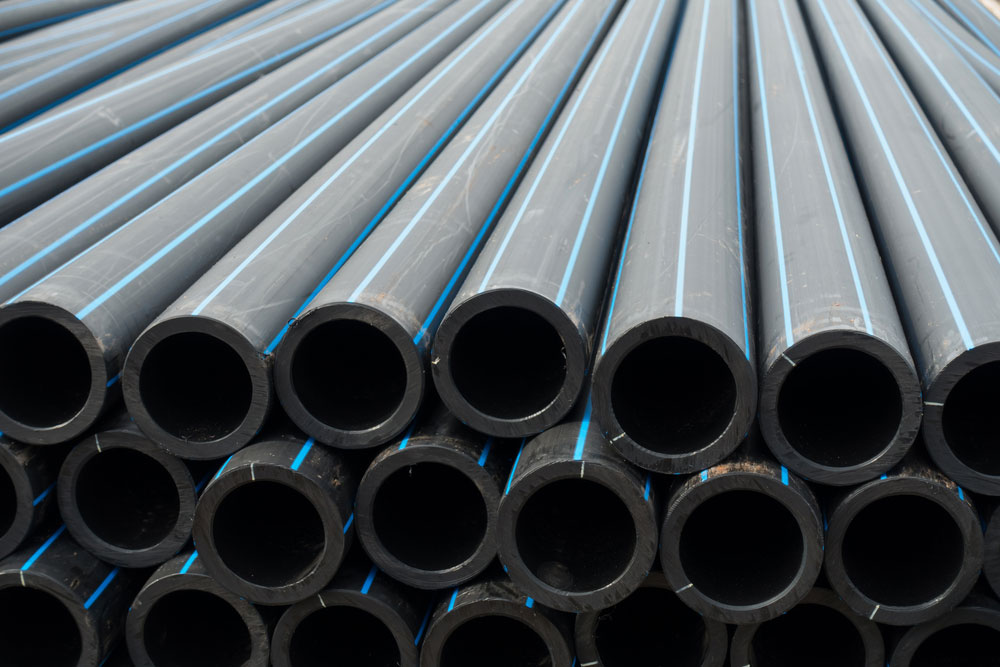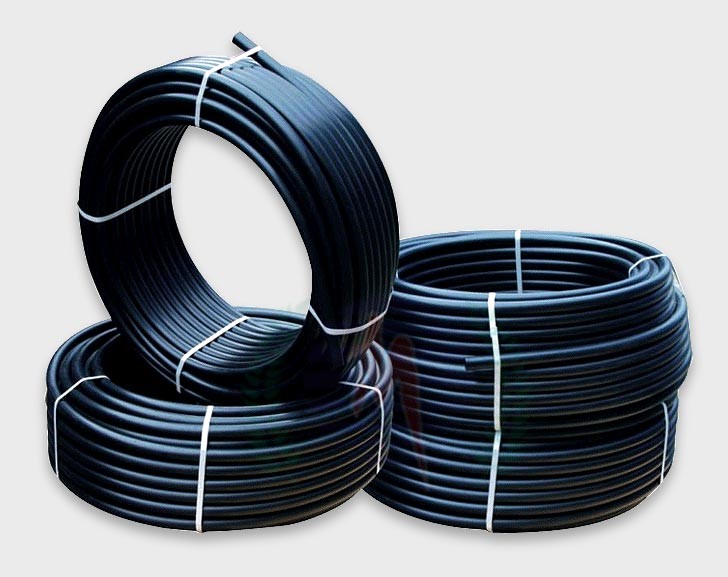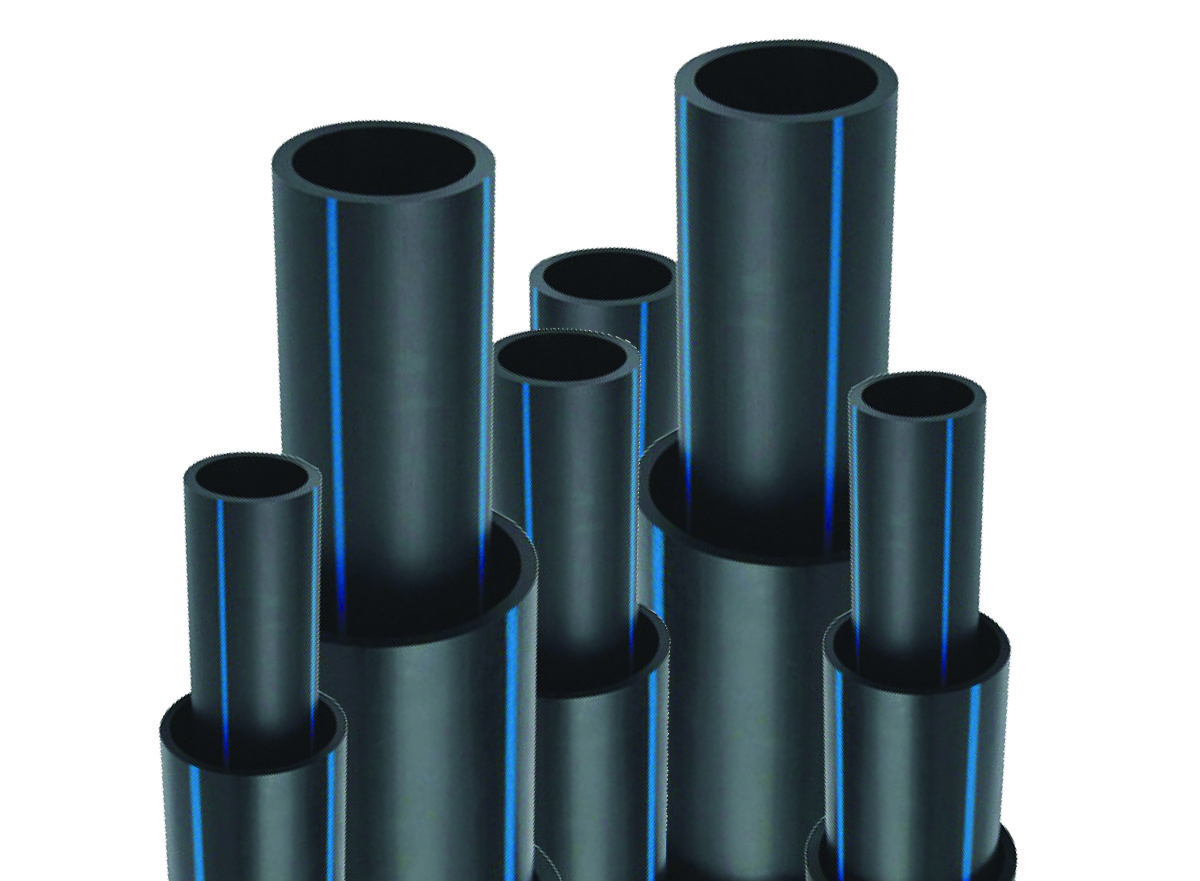How American Plastics HDPE Pipe Manufacturing Maintains High Standards
Wiki Article
Explore the Production Refine Behind High-Quality HDPE Pipe and Its Applications
The manufacturing process of top notch HDPE pipelines is intricate and systematic. It begins with the option of raw products that improve performance. Following this, ethylene goes through polymerization to form resin, which is then shaped with extrusion. Quality control is vital, guaranteeing that the end product satisfies stringent criteria. The trip of HDPE pipes doesn't finish with manufacturing. Their applications across numerous industries disclose a wider value worth analyzing.Understanding HDPE: Qualities and Advantages

High-density polyethylene (HDPE) is a functional thermoplastic recognized for its toughness and resistance to different ecological variables. This material exhibits superb tensile strength, making it suitable for requiring applications. Its low-density structure adds to a lightweight item, promoting simplicity of handling and installation. HDPE additionally showcases exceptional resistance to chemicals, which reduces degradation when subjected to extreme compounds.
The product's low dampness absorption additionally enhances its longevity, making it suitable for usage in pipelines and tank. In addition, HDPE is immune to ultraviolet (UV) radiation, making sure that products preserve their honesty also when subjected to sunlight. Moreover, its adaptability enables the production of detailed shapes without endangering strength. The environment-friendly nature of HDPE, typically derived from recycled materials, contributes to its appeal, advertising sustainable techniques in manufacturing. Generally, these residential properties and benefits make HDPE a preferred choice for numerous commercial and consumer applications.
Raw Material Choice for HDPE Manufacturing
The selection of raw materials for HDPE manufacturing is vital to verify the end product satisfies the desired requirements and quality requirements. High-density polyethylene (HDPE) is largely generated from polymerized ethylene, originated from nonrenewable fuel sources such as natural gas or crude oil. The top quality of these feedstocks significantly influences the mechanical and thermal residential properties of the final HDPE.Ingredients also play a considerable duty in enhancing HDPE's performance, including antioxidants, UV stabilizers, and colorants, which boost toughness and resistance to ecological elements. The selection process should think about not just the chemical structure of the raw products yet also their processing attributes to assure effective production.
In addition, the sourcing of resources need to focus on sustainability and conformity with environmental policies, as responsible practices are imperative in today's market. Ultimately, mindful resources option lays the structure for creating top quality HDPE pipes ideal for varied applications.
The Extrusion Refine: Shaping HDPE Pipeline
The extrusion process plays an important duty in forming HDPE pipes, beginning with thorough material preparation strategies that guarantee ideal circulation and consistency. Similarly crucial is the design of the die, which straight affects the last measurements and surface area high quality of the pipe. Together, these factors add significantly to the efficiency and high quality of HDPE pipe manufacturing.Product Prep Work Strategies
Efficient production of HDPE pipelines begins with meticulous material prep work methods, especially the extrusion process. Throughout this phase, high-density polyethylene material is initial dried to get rid of moisture, ensuring ideal flow characteristics. The material is after that fed right into the extruder, where it undergoes heating and melting, transforming into a thick state. This heating process is carefully controlled to maintain the material's honesty and efficiency. The molten HDPE is compelled through a die, forming it into a continuous pipe form. Proper temperature level management throughout extrusion is essential, as it directly influences the material's residential properties and the last item quality. When formed, the HDPE pipe is cooled down and cut to specified lengths, ready for subsequent processing and applications.Die Layout Significance
Precision in die style plays a necessary function in the extrusion procedure of HDPE pipelines. The die serves as the last shaping tool, directly affecting the pipeline's measurements, wall surface density, and surface finish. A well-designed die warranties consistent product flow, minimizing problems such as irregularities and weak points. The geometry of the die have to be enhanced to accommodate the particular residential properties of HDPE, including its thickness and thermal habits throughout extrusion. Furthermore, the cooling price of the material as it travels through the die can markedly influence the pipe's structural integrity. Spending in advanced die technology is important for manufacturers aiming to produce high-quality HDPE pipelines that fulfill sector criteria and consumer assumptions.Quality Assurance Steps in HDPE Production
Although numerous elements affect the quality of HDPE pipe manufacturing, efficient quality assurance measures are critical to assure uniformity and reliability in the end product. Secret quality assurance practices include strenuous product examination, confirming that the raw polyethylene meets recognized criteria for pureness and thickness. Throughout the extrusion process, parameters such as temperature level, pressure, and cooling time are very closely kept track of to preserve dimensional precision and view architectural honestyIn addition, post-production screening is necessary; manufacturers commonly conduct hydrostatic tests to analyze the pipeline's strength and resistance to stress. Aesthetic assessments for surface defects further improve high quality guarantee. Qualification from pertinent criteria organizations, like ASTM or ISO, supplies an extra layer of trustworthiness. By applying these complete quality assurance measures, suppliers can reduce problems, enhance efficiency, and guarantee that the HDPE pipes meet the details requirements of various applications, inevitably bring about client contentment and rely on the item.
Applications of HDPE Pipe Throughout Industries
HDPE pipes are utilized across various fields as a result of their toughness and convenience. In water circulation systems, they ensure effective shipment, while in wastewater management, they give reliable remedies for waste transport. Additionally, agricultural watering networks gain from HDPE's resistance to deterioration and adaptability, making it an excellent selection sink water lines for modern-day farming methods.
Water Circulation Solutions
A substantial number of markets rely upon high-density polyethylene (HDPE) pipelines for effective water circulation systems. Recognized for their resilience and resistance to deterioration, HDPE pipes are extensively made use of in local water system networks, agricultural watering, and industrial applications. Their light-weight nature helps with easy handling and setup, minimizing labor expenses and time. Furthermore, HDPE pipes can suit different pressure levels, making them ideal for both reduced and high-pressure systems. Midland TX HDPE Pipe Fittings in Stock. The adaptability of the product permits smooth combination right into existing infrastructure, lessening the requirement for extensive excavation. HDPE's resistance to chemical seeping assurances that the water provided remains secure and tidy, making it an excellent selection for preserving the quality of safe and clean water across numerous industries.Wastewater Administration Solutions
Effective water distribution systems additionally lead the way for innovative wastewater management options, where high-density polyethylene (HDPE) pipelines play a significant function. Renowned for their resilience and resistance to deterioration, HDPE pipelines are ideal for moving wastewater in numerous settings. Their flexibility enables very easy setup in intricate settings, reducing the demand for substantial excavation. In addition, HDPE's smooth indoor surface reduces friction, boosting flow rates and efficiency. These pipelines are likewise immune to chemical leaching, ensuring that impurities do not compromise the surrounding environment. Industries, communities, and therapy facilities progressively count on HDPE pipelines for their reliability and durability, making them a favored selection for modern-day wastewater management systems. This versatility emphasizes the important significance of HDPE pipelines across many applications.Agricultural Watering Networks
Agricultural watering networks profit substantially from using high-density polyethylene (HDPE) pipes, which supply reliable and trusted water shipment to plants. HDPE pipelines are light-weight, making them simple to deliver and mount, while their versatility allows for numerous arrangements in diverse surfaces. These pipelines show outstanding resistance to rust, chemicals, and UV radiation, guaranteeing resilience in extreme agricultural atmospheres. Additionally, their smooth indoor surface area minimizes friction loss, optimizing water flow and decreasing power prices connected with pumping. The long life of HDPE pipelines, commonly going beyond half a century, adds to lower maintenance and substitute expenditures. Farmers progressively rely on HDPE pipelines to boost irrigation effectiveness and advertise lasting agricultural practices, inevitably leading to boosted plant yields and source preservation.
Future Patterns in HDPE Pipe Innovation
As the need for sustainable and reliable framework expands, improvements in HDPE pipeline innovation are poised to change different markets. Arising patterns consist of the integration of clever technologies, such as sensors and IoT capabilities, which facilitate real-time tracking of pipeline conditions, decreasing maintenance expenses and protecting against leakages. Furthermore, the advancement of innovative production techniques, such as 3D printing, is allowing the manufacturing of facility, customized pipeline designs that satisfy specific project requirements.The emphasis on recycling and circular economic climate practices is driving the innovation of HDPE pipelines made from recycled products, improving sustainability. Improved jointing techniques, such as electro-fusion and mechanical installations, are likewise boosting installation performance and integrity. Ultimately, the growing emphasis on environmental policies is pushing manufacturers to embrace greener production processes, making certain that HDPE pipelines not only fulfill sector standards yet likewise cultivate a more sustainable future for framework advancement.
Frequently Asked Concerns
Just How Does HDPE Compare to Various Other Plastic Products?
HDPE outperforms many various other plastic products relating to resilience, chemical resistance, and flexibility. Its reduced thickness and high tensile stamina make it optimal for various applications, frequently exceeding choices in both performance and durability.What Are the Environmental Impacts of HDPE Manufacturing?
The environmental effects of HDPE manufacturing include greenhouse gas discharges, power consumption, and potential pollution from manufacturing processes. Furthermore, inappropriate disposal can result in dirt and water contamination, increasing issues about long-term eco-friendly impacts.Can HDPE Piping Be Reused?
Yes, HDPE pipelines can be recycled. Numerous facilities approve utilized HDPE for processing, transforming it into brand-new items. This recycling adds to sustainability efforts, lowering plastic waste while preserving resources and energy in the manufacturing cycle.hop over to these guys
What Is the Lifespan of HDPE Pipes?

Exactly How Do Temperature Level Variants Influence HDPE Pipeline Efficiency?
Temperature variants greatly impact HDPE pipeline efficiency, affecting flexibility and toughness. Heats can cause softening, while low temperature levels might trigger brittleness, ultimately affecting the pipeline's sturdiness and viability for different applications in varied environments.Report this wiki page